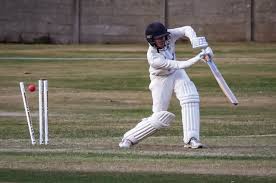Feeling Stumped
Cricket Injuries are, unsurprisingly, quite common. The Cricket World Cup is finally in full flow. And many of you will be digging out your whites.
A rock hard ball can inevitably lead to many an acute injury. These tend to be impact injuries such as broken fingers. But what often leaves our clients stumped are soft tissue problems they encounter.
Cricket creates unique demands on the body. We take a closer look at injury management.
The most common cricketing injuries
- The type of injury you are likely to encounter is affected by your role in the team. Bowlers are prone to knee, lower back and ankle problems. And the front leg is particularly vulnerable as it undergoes large stresses in the delivery stride.
- The ACL (anterior cruciate ligament) is the most prevalent problem area in the knee. It can be susceptible to strains or even complete tear. It can be a troublesome injury that can keep you out of the game for extended periods of time.
- For bowlers, the ankle is often strained if it becomes unstable in the delivery stride. Fast bowlers, in particular, are often plagued by Spondylolysis (pars fractures). These occur typically in the lumbar region of the back.
- A poor throwing action often causes shoulder issues when fielding. Invariably, the problem will be posterosuperior shoulder pain. But other issues when fielding are related to twisting and turning. So the hips, ankles and knees are all at risk.
- The poor old batsman is most likely to suffer impact injuries. But hamstring problems from running quick singles are another common complaint.
Managing Injury Risk
Accidents do happen. And, of course, injuries can’t be eliminated completely. But there are steps that can be taken to reduce risk in each aspect of the game.
- Learn about appropriate flexibility. There is a time for different types of stretches. Generally speaking, a sequence of dynamic stretching is the best pre-game. More static stretching can be used post-match or between games.
- Find ways to condition your core. Good conditioning of the trunk muscles is crucial for bowlers. But it can also play a role for batsman and fielders, too. Many professionals turn to the likes of Yoga or Pilates for help with this. And these types of classes don’t have the stigma in the sport that they once did.
- Get a muscle balance assessment. Flexibility alone is not enough. Neither is strength conditioning. Of particular importance is muscle balance. The ratio of strength between antagonist muscle groups can be a key factor in joint integrity. For example, having a health hamstring to quadriceps ratio can help you guard against hamstring and knee problems.
- Invest in a regular massage. It can help in so many ways. It will reduce muscle soreness and aid mobility, And in addition, will help improve performance both at a physical and psychological level.
A final word
We can help with your physical conditioning, and avoid common cricket injuries. We hope this information is useful for you. If you need advice or have any questions about our treatments, please contact us. You can find us in Mill Hill Broadway and Islington. We are always happy to help. If you like this blog, please share!




